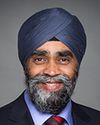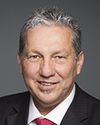Thank you, Mr. Chair.
Mr. Minister, ladies and gentlemen, it is a great pleasure and honour to meet you today.
First of all, Minister, I think this is the first time I have had the chance to have an exchange with you. I'm very pleased for that.
As a Canadian, I want to thank you for what you have done for our country when you served in our army. You served well; you defended yourself well. You defended our country and the values of our country very well. Thank you so much, Lieutenant-Colonel, for what you have done.
When the government was elected two and a half years ago, we saw a major change in rhetoric, in words. A lot of emphasis was placed on those who have brought great honour to Canada in the last half-century. They are the peacekeepers, the people who go to serve with the blue helmets.
We have heard a lot about it, but the reality has sometimes been different.
Under our government, generally speaking, some 300 peacekeepers were deployed each year. Now there are barely 46 of them, and, a short time ago, there were no more than 22.
Mr. Minister, why so much rhetoric about peacekeepers, while in reality, there are fewer today than there were three years ago?






